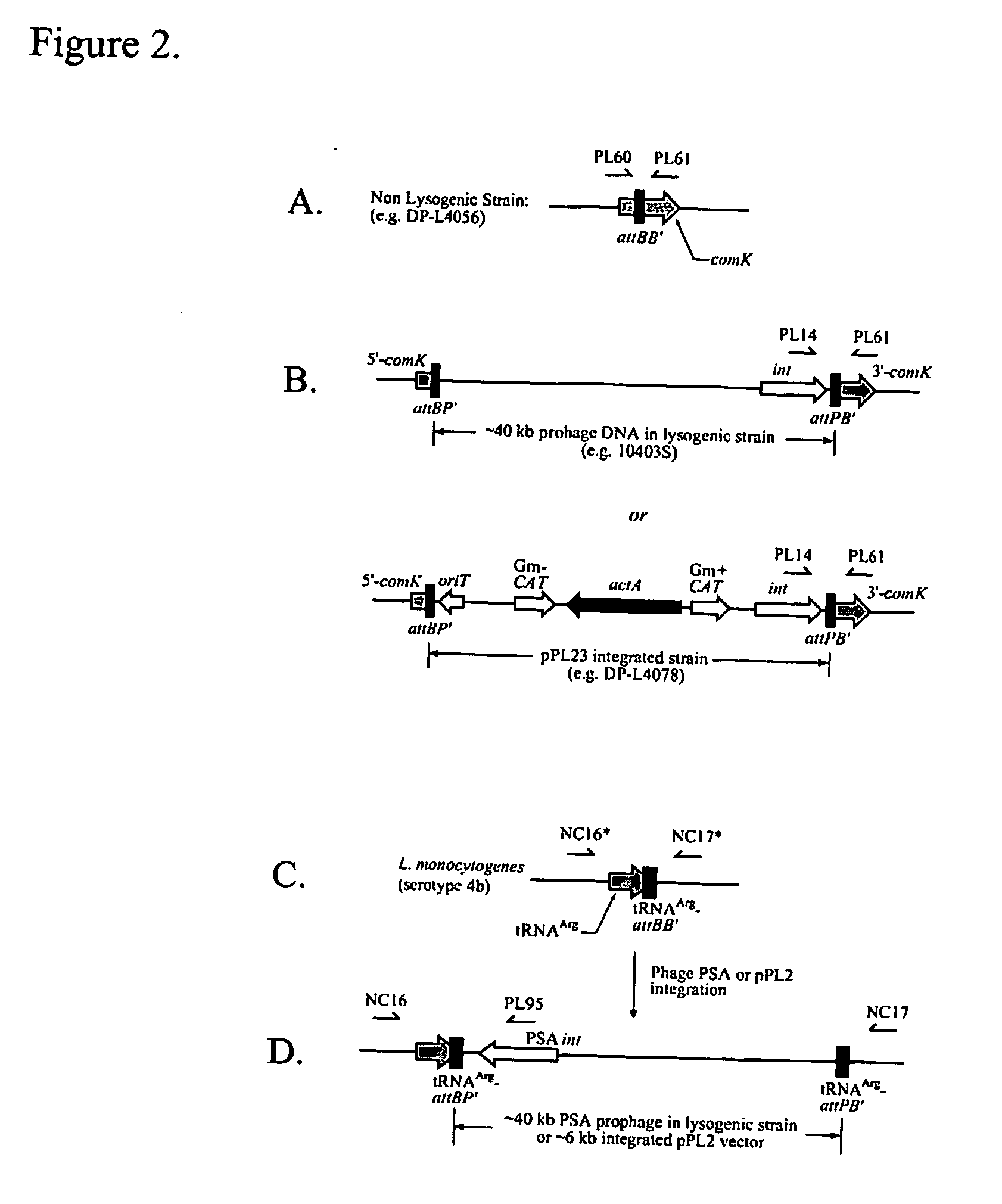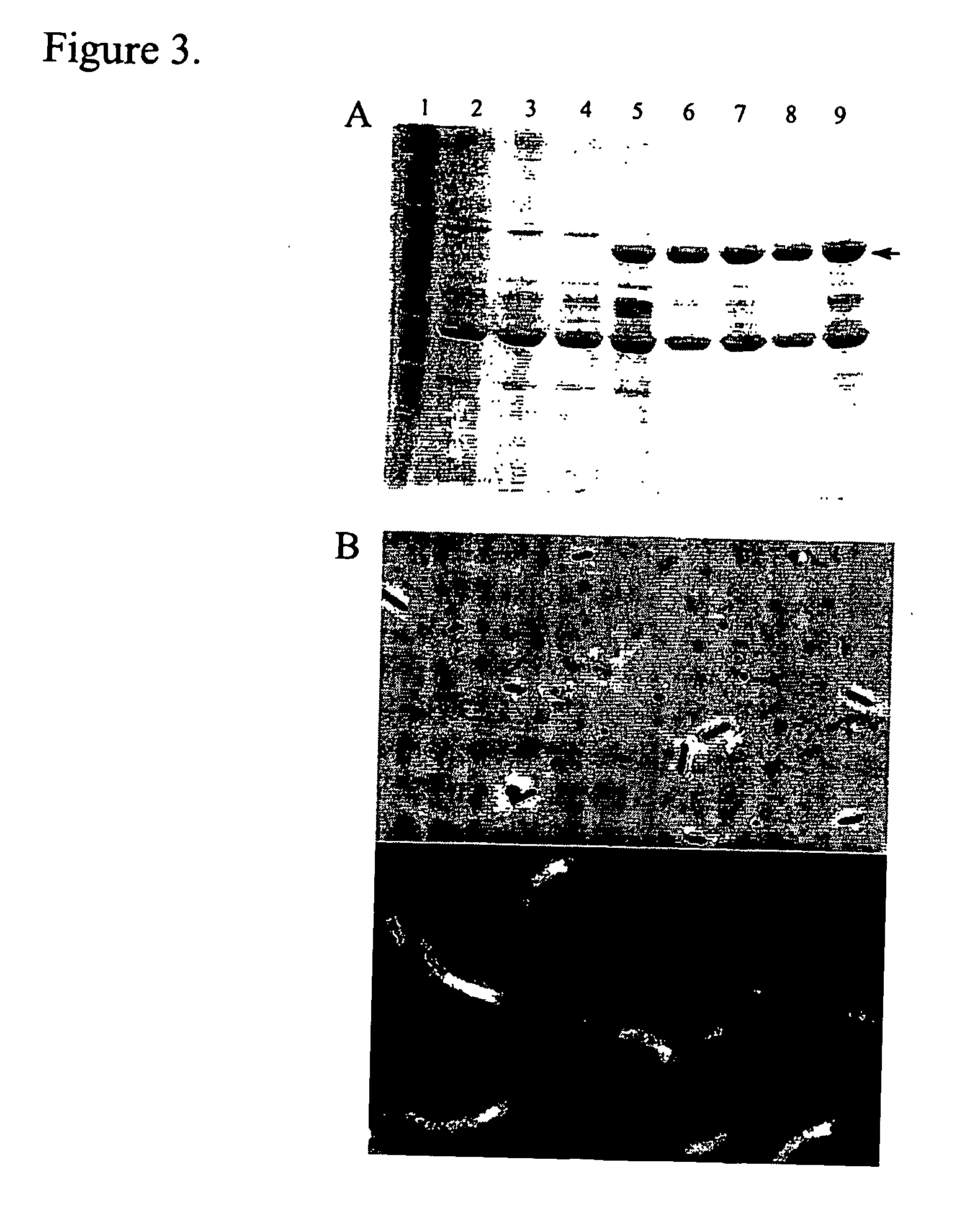Site specific listeria integration vectors and methods for using the same
a listeria and integration vector technology, applied in the field of listeria species, can solve the problems of variable impact, method not entirely satisfactory, instability of the expression cassette in the transformed species,
- Summary
- Abstract
- Description
- Claims
- Application Information
AI Technical Summary
Problems solved by technology
Method used
Image
Examples
Embodiment Construction
[0016] Site-specific Listeria species integration vectors and methods for their use are provided. The subject vectors include a bacteriophage integrase gene and a bacteriophage attachment site, where in many embodiments the bacteriophage that is source of these elements is a listeriophage. In certain embodiments, the subject vectors further include a multiple cloning site, where the multiple cloning site may further include a coding sequence, e.g., for a heterologous polypeptide, etc. The subject vectors and methods find use in a variety of different applications, including the study of Listeria species and the preparation of Listeria species vaccines.
[0017] Before the subject invention is described further, it is to be understood that the invention is not limited to the particular embodiments of the invention described below, as variations of the particular embodiments may be made and still fall within the scope of the appended claims. It is also to be understood that the terminol...
PUM
| Property | Measurement | Unit |
|---|---|---|
| optical density | aaaaa | aaaaa |
| temperature | aaaaa | aaaaa |
| size | aaaaa | aaaaa |
Abstract
Description
Claims
Application Information
 Login to View More
Login to View More - R&D
- Intellectual Property
- Life Sciences
- Materials
- Tech Scout
- Unparalleled Data Quality
- Higher Quality Content
- 60% Fewer Hallucinations
Browse by: Latest US Patents, China's latest patents, Technical Efficacy Thesaurus, Application Domain, Technology Topic, Popular Technical Reports.
© 2025 PatSnap. All rights reserved.Legal|Privacy policy|Modern Slavery Act Transparency Statement|Sitemap|About US| Contact US: help@patsnap.com



